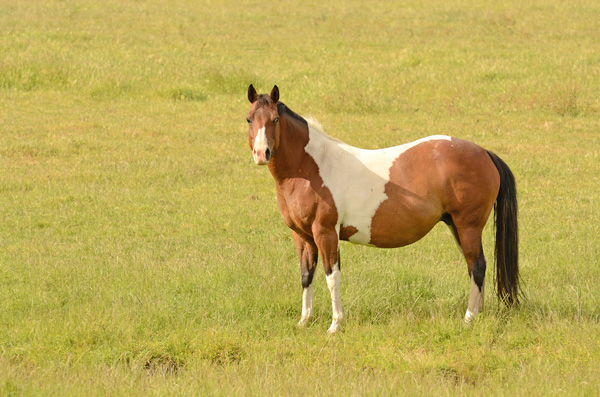
Budget often dictates when it comes to buying a trailer, but by shopping smart you can get the features you want without having to buy more trailer than you need.
Neva Scheve, owner of EquiSpirit Trailers and author of The Complete Guide to Buying, Maintaining, and Servicing a Horse Trailer, said to consider the type and size of trailer that will fit your current situation with the idea of trading up when you can afford it. She then said to take into account how often you plan to use your trailer. For instance, if you travel often or for long periods at a time, your trailer will need to be especially durable and easy to operate.
Trailer Types
Scheve cited the pluses and minuses of the two types of trailers: bumper pull/tag-alongs and goosenecks:
Bumper Pull/Tag-Along: Advantages
- A bumper pull is less expensive than a gooseneck trailer.
- There is a larger selection of towing vehicles that can be used (i.e. SUV, mini-van) than the traditional pick-up truck.
- A bumper pull takes up less storage space than a gooseneck trailer.Because more people own them, it’s easier to find an emergency lift or tow vehicle with sufficient hauling power should a situation arise where towing becomes necessary.
- Because a bumper pull follows the path of the tow vehicle, it is easier to make normal turns.
- Licensing is less complicated. Since most bumper pull combinations will weigh under 10,001 pounds (Gross Combination Vehicle Weight Rating), you won’t have to register your rig as “commercial.”
Bumper Pull/Tag-A-Long: Disadvantages
- When hauling more than two horses, bumper pulls can have stability problems if horses are not loaded correctly or evenly (tongue weight can become too heavy or too light on the rear of the tow vehicle).
- There is not as much room for sleeping quarters as in a gooseneck trailer.
Gooseneck: Advantages
- A gooseneck trailer is able to carry more weight with better stability, an important point if you are planning to haul more than two horse.
- Because the trailer starts turning when the truck turns, the turning radius is much tighter, allowing you better maneuvering ability in tight spaces than with a bumper pull.
- The area in the gooseneck can be used for sleeping or extra storage without adding extra length to the floor of the trailer.
Gooseneck: Disadvantages
- A gooseneck costs more than a bumper pull and can only be pulled by a pickup truck.
- The tight turning radius makes it more difficult to turn without cutting the corners too sharply.
- It is more difficult to find emergency towing service.
- Depending on the state in which you live, licensing can be more complicated. Because more gooseneck trailers combinations will be over 10,001 pounds, (GCVWR), you may have to declare your rig as “commercial.”
- Since gooseneck trailers are longer, they’re harder to store.
No matter what type of trailer you buy or own, there are some basic safety tips that you should follow. Scheve provided this safety check list for all trailers:
- Sharp objects or edges are an invitation for injury, so make sure that all surfaces, exterior as well as interior are rounded or smoothed out.
- Latches, tie rings, butt bars, breast bars, etc. should be strong enough to withstand wear and tear from the largest, strongest horse.
- Dividers, posts, butt bars and breast bars should operate freely, yet can be easily removed in an emergency.
- Ramps should be solid, low, non-slip, and long enough to protect you from getting kicked while lifting the platform.
- Step up (no ramp) trailers need to be wide enough to allow your horse to turn around and unload headfirst instead of having to back out (a front unload ramp is even better).
- The construction material of the trailer should be strong enough to handle the size, weight and strength of your horse(s) plus the equipment that will be hauled.
- Additional safety features that can help reduce stress and which may not be expensive include removable hay bags, mats, screens, bar guards on windows, removable or no rear center post, and water tank.


